You’ve been doing mag checks since your first flight lesson, but are you doing them right?
From your first days as a student pilot, you were undoubtedly taught to perform a “mag check” as part of each pre-takeoff runup. But do you know how to do it correctly, what to look for, and how to interpret the results? Surprisingly, many pilots don’t.
To begin with, most Pilot Operating Handbooks tell you to note the RPM drop when you switch from both mags to just one, and give some maximum acceptable RPM drop and sometimes some maximum acceptable RPM difference between the two mags.
For example, the POH for my TCM-powered Cessna T310R specifies that an RPM drop more than 150 RPM on either mag or a difference more than 50 RPM between the two mags is unacceptable. Many Lycoming-powered aircraft specify a maximum drop of 175 RPM and a maximum difference of 50 RPM.
Lycoming’s revised guidance on mag checks
On June 18, 2010, Lycoming issued Service Instruction No. 1132B revising its guidance on how pre-flight mag checks should be performed. Some highlights of this new service bulletin:
- Engines with fixed-pitch props should conduct the mag check at approximately 1,800 RPM (2,000 RPM maximum). Those with controllable-pitch propellers should use 50% to 65% power as determined from the manifold pressure gauge (unless otherwise directed by the POH).
- Maximum allowable mag drop is 175 RPM for each magneto, and 50 RPM difference between magnetos.
- If mag drop exceeds 175 RPM, lean the engine to peak RPM and then repeat the mag check at the newly-leaned mixture.
The entire revised Service Instruction 1132B may be found online at http://www.lycoming.textron.com/support/publications/service-instructions/pdfs/SI1132B.pdf
EGT Method
In my view, however, this archaic RPM-drop method makes little sense for aircraft that are equipped with a modern digital engine monitor (as so many are these days). EGT rise is a far more reliable and revealing indicator of proper ignition performance than RPM drop. Consequently, I recommend focusing primarily on the engine monitor, not the tachometer, when performing the mag check.
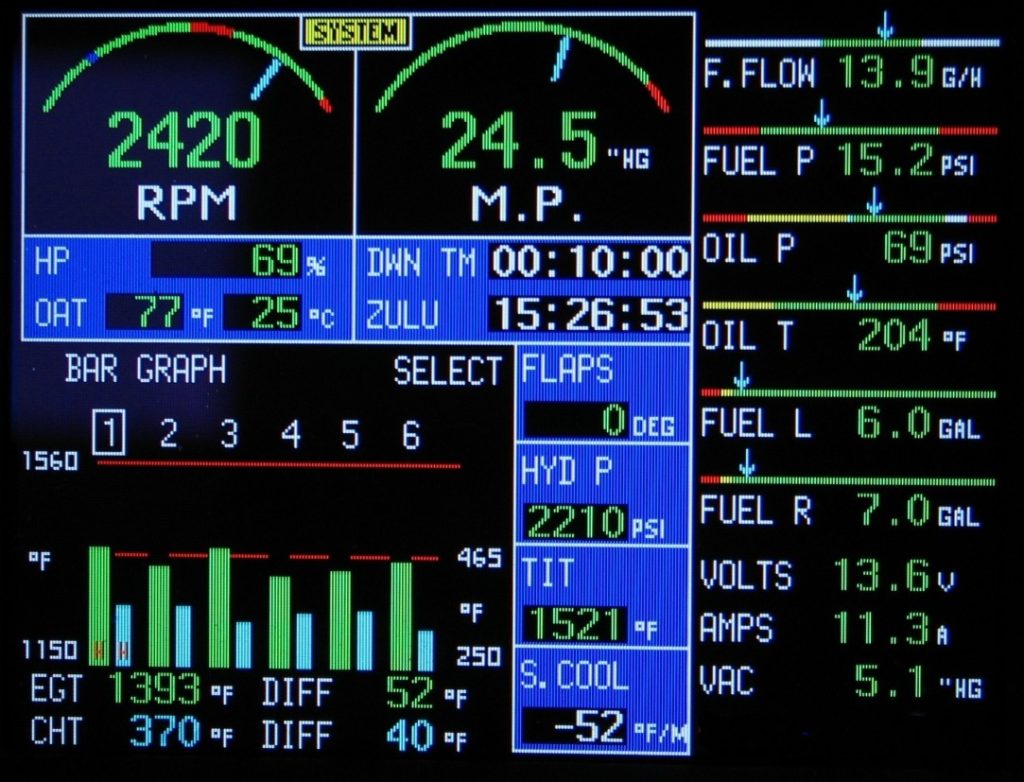
Look for all EGT bars rising and none falling when you switch from both mags to one mag. The EGT rise will typically be 50°F to 100°F, but the exact amount of rise is not critical. In fact, it’s perfectly normal for the rise to be a bit different for odd- and even-numbered cylinders. Also look for smooth engine operation and stable EGT values when operating on each magneto individually. A falling or erratic EGT bar or rough engine constitutes a “bad mag check” and warrants troubleshooting the ignition system before flying.
Most engine monitors have a “normalize mode” that levels all the EGT bars at mid-scale and increases the sensitivity of the display. It’s a good idea to use this mode during mag checks because doing so will make any ignition anomalies much more obvious. Bring the engine up to the manufacturer-specified runup RPM (commonly 1,700 for direct-drive TCM engines, 1,800 to 2,000 for Lycomings), place the engine monitor in normalize mode, perform the mag check (BOTH-LEFT-BOTH-RIGHT-BOTH), then return the engine monitor to its default mode (sometimes called “percentage mode”).
In-Flight Mag Check
The usual pre-flight mag check is a relatively non-demanding test, and will only detect gross defects in the ignition system. To make sure your engine’s ignition is in tip-top shape, I suggest performing an in-flight mag check at cruise power and a lean mixture—preferably a lean-of-peak (LOP) mixture.
An in-flight LOP mag check is a far more demanding and discriminating way to test your ignition system. That’s because a lean mixture is much harder to ignite then a rich one. A marginal ignition system can pass the normal pre-flight mag check, but it takes one in excellent shape to pass an in-flight LOP check.
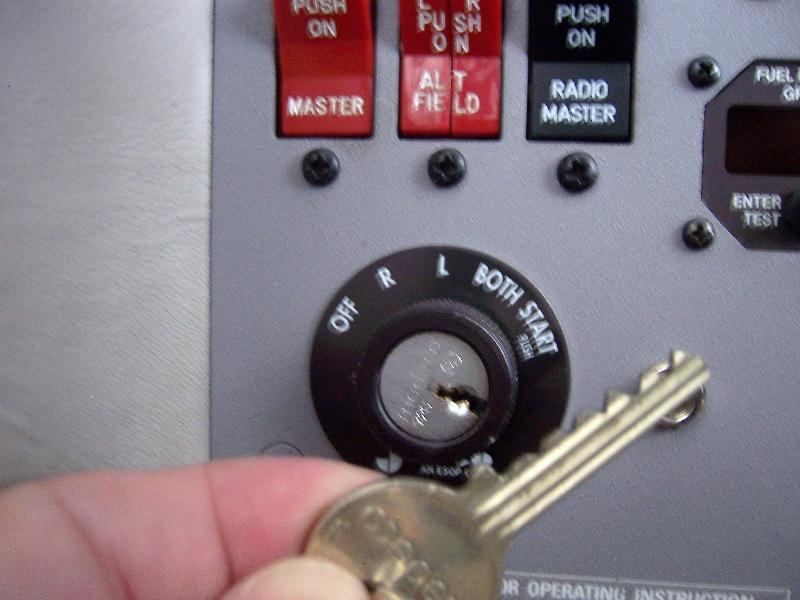
The in-flight mag check is performed at normal cruise power and an aggressively lean mixture (preferably LOP). Run the engine on each individual mag for at least 15 or 20 seconds while watching the engine monitor in normalize mode. Ensure that all EGTs rise, that they are stable, and that the engine runs smoothly on each mag. Don’t expect any RPM drop, at least if you have a constant-speed prop. Focus primarily on the EGTs, and secondarily on any perceptible engine roughness when running on one mag.
If you see a falling or unstable EGT, write down which cylinder and which mag, so you or your mechanic will know which plug is the culprit. If you don’t write it down, I guarantee you’ll forget the details by the time you get back on the ground. (Don’t ask me how I know this.)
Bad Mag Checks
If you perform a mag check (ground or flight) and don’t like what you see, then what? How can you tell what’s wrong, and what should you do to correct it?
To begin with, the phrase “mag check” is a bit misleading. The vast majority of “bad mag checks” are caused by spark plug issues, not magneto issues. (We really should call it an “ignition system check.”) Using the EGT method, it’s usually easy to tell whether a bad mag check is due to a spark plug problem or a magneto problem: A faulty spark plug (or more rarely, a faulty ignition lead) affects only one cylinder (i.e., one EGT bar on your engine monitor), while a faulty magneto affects all cylinders (and all EGT bars).
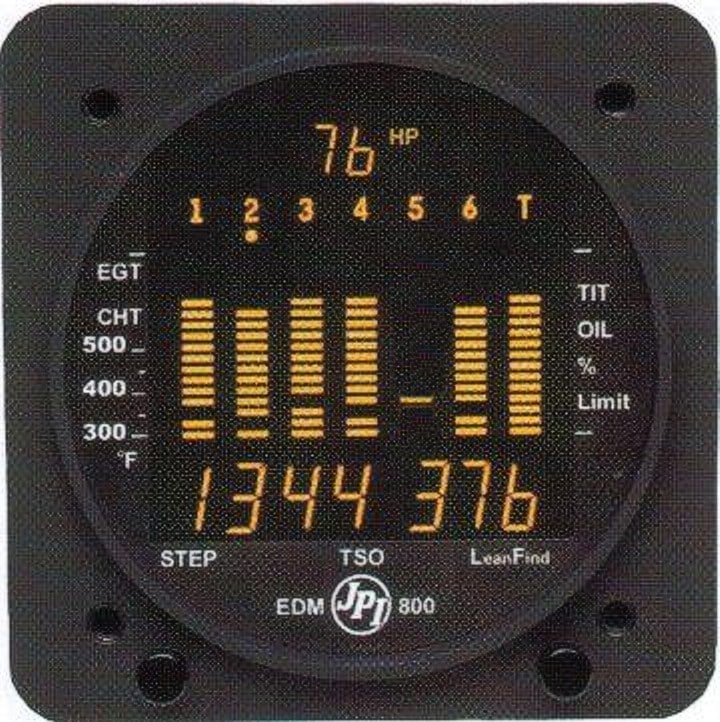
If you detect a non-firing spark plug during your pre-takeoff runup, one common cause is oil fouling. You can try to clear an oil-fouled spark plug by running the engine for 30 seconds or so with the mixture leaned out to peak EGT (or peak RPM if you don’t have an EGT gauge). If that doesn’t cure the problem, then the plug may be lead-fouled or damaged, and you’ll want to have it inspected and cleaned or replaced before flight.
On the other hand, if you observe a non-firing plug during an in-flight mag check, there’s usually no need to panic because the cylinder will not be damaged by running on only one plug. If the engine runs smoothly on both mags, simply proceed to your destination and deal with the problem when you get there.
Mag Timing Issues
During a pre-takeoff mag check, if you get an excessive RPM drop when you switch to one mag but all EGTs rise and the engine runs smooth, chances are that it’s not a bad magneto but rather retarded ignition timing (i.e., spark too late). This is sometimes caused by mechanic error in timing the mags during maintenance (especially annual inspections), but it can also be caused by excessive magneto cam follower wear (possibly due to inadequate cam lubrication) or some other internal mag problem. Retarded ignition timing also results in higher-than-usual EGT indications. Mildly retarded timing is not a serious problem, but it does cause some loss of performance so should be addressed.
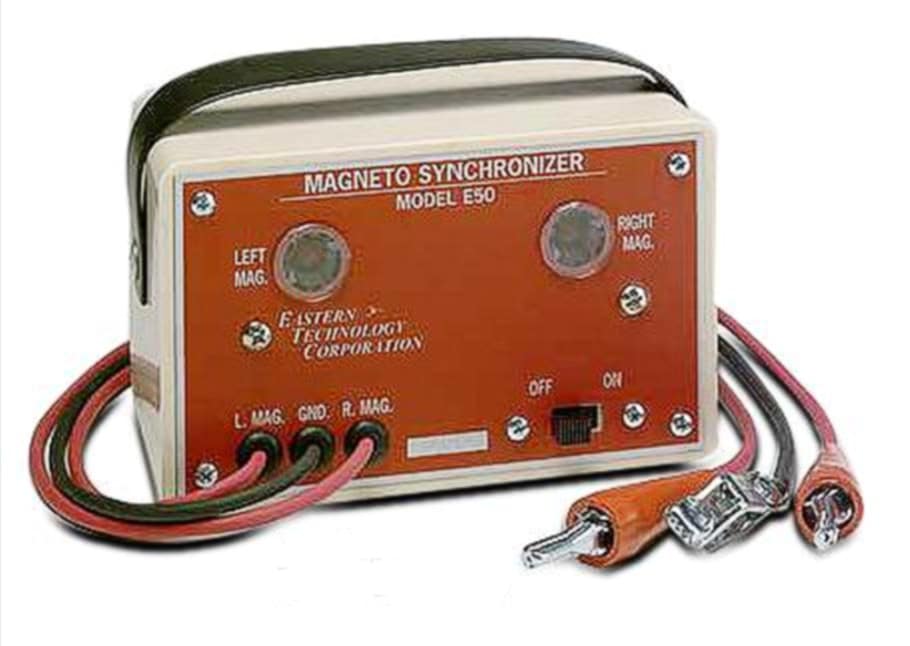
Conversely, advanced ignition timing (i.e., spark too early) results in lower-than-usual EGT indications, and also higher-than-usual CHT indications. Advanced timing is a much more dangerous condition because it can lead to detonation, pre-ignition and serious engine damage. If you observe low EGTs and high CHTs after an aircraft comes out of maintenance, do not fly until you’ve had the ignition timing re-checked.
High-Altitude Misfire
We’ve already seen that it’s more difficult to ignite a lean mixture than a rich one. In turbocharged airplanes, there’s also another factor to consider: altitude. The higher a turbocharged airplane flies, the more difficult it is for the spark to jump the gap between the spark plug electrodes, and the more likely that the spark will instead “arc-over” inside the magneto itself.
Such “high-altitude misfire” is bad for two reasons. First, it can cause the engine to run rough—sometimes frighteningly, change-of-underwear rough. Second, it can damage the magneto internally, and in extreme cases cause the magneto to fail mechanically. As Martha Stewart would say, this is not a good thing.
There are two fundamental strategies for preventing high-altitude misfire: make it easier for the spark to occur at the spark plug gap (where it belongs), or make it harder for it to arc-over inside the mag (where it doesn’t).
The easiest way to make it easier for the spark to occur at the spark plug gap is to tighten up the gap. Most aviation plugs have specs calling for a gap of .016 and .019 inch. Keeping the gap at the tight end of the range (.016) provides increased resistance to high-altitude misfire. Of course, the gap increases as the plug wears, so it’s important to re-gap the plugs on a regular basis, typically every 100 hours or less for a turbocharged engine.
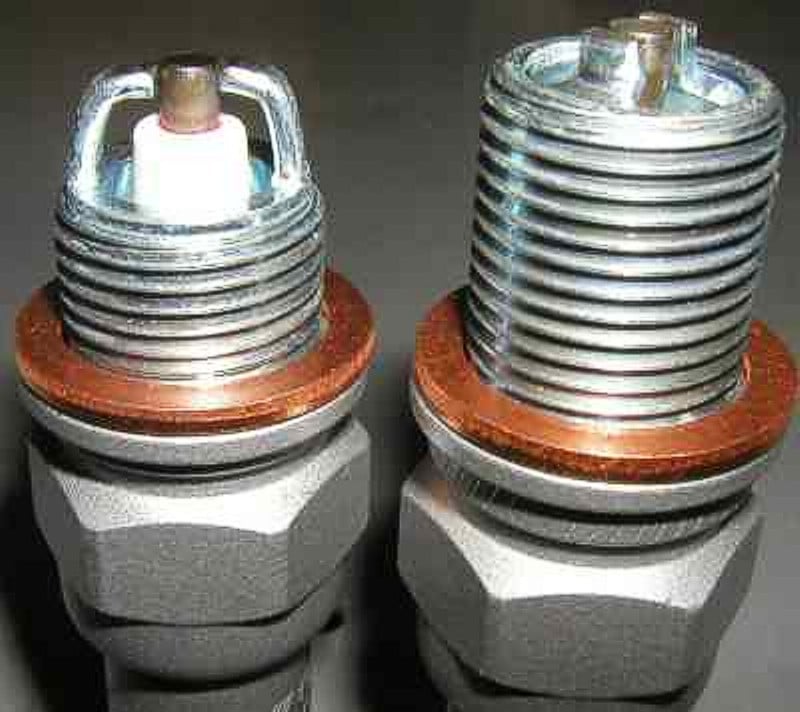
There are two ways to make it harder for arc-over to occur inside the magneto during high-altitude flight. One is to use a magneto that is physically large, which greatly reduces the likelihood of internal arc-over between widely-spaced components. For example, the huge TCM/Bendix S-1200 mags that I use on my Cessna T310R have distributor block electrodes spaced 1.2 inches apart, nearly twice as far as smaller mags like TCM/Bendix S-20s and Slick 6300s. However, the S-1200s are a good deal heavier and more expensive than their smaller brethren, and are too large to fit in some engine installations (such as crossflow TCM -550s).
The other way to inhibit arc-over at high altitudes is to pressurize the mags with upper-deck air. This works well, but it’s something of a mixed blessing. Pressurized mags tend to have more problems and need more frequent maintenance than unpressurized mags, because the pressurization pumps most air through the magnetos (particularly when flying through clouds and precip), and often causes corrosion and contamination issues.
Preventive Maintenance
Regular preventive maintenance is the key to good ignition performance. Every 100 hours, the plugs should be removed, cleaned, gapped, rotated and reinstalled, and the ignition timing should be checked and adjusted if necessary. When the plugs become excessively worn, they should be replaced with new ones. Conventional massive-electrode spark plugs typically last 400 to 500 hours; fine-wire (iridium) plugs can go nearly three times as many hours, but cost more than three times as much.
(NOTE: I am not a big fan of fine-wire plugs, and use conventional massive-electrode plugs in my airplane. In recent years, we’ve seen an epidemic of insulator failures in fine-wire Champion spark plugs, and as I write this column we’re working with Champion and the Atlanta FSDO to try to get to the bottom of why these failures are occurring.)
Every 500 hours, the magnetos should come off the engine and go through a complete disassembly inspection, lubrication, adjustment and reassembly process generally referred to as a “500-hour IRAN” (inspect and repair as necessary). Although many shops and mechanics do this magneto IRAN in-house, I prefer to send the mags out to a magneto specialist like Aircraft Magneto Service (http://www.aircraftmagnetoservice.net), because they have the specialized knowledge and test equipment to do the job right. Some shops and mechanics simply replace the mags every 500 hours with overhauled/exchange units, but in my experience this costs about twice as much as sending the mags out for IRAN, and so (being a congenital skinflint) I prefer the IRAN route.
In addition, I recommend giving the ignition system a “stress test” every few flights by performing an in-flight LOP mag check, and taking prompt corrective action if less-than-optimal ignition performance is observed.
You bought a plane to fly it, not stress over maintenance.
At Savvy Aviation, we believe you shouldn’t have to navigate the complexities of aircraft maintenance alone. And you definitely shouldn’t be surprised when your shop’s invoice arrives.
Savvy Aviation isn’t a maintenance shop – we empower you with the knowledge and expert consultation you need to be in control of your own maintenance events – so your shop takes directives (not gives them). Whatever your maintenance needs, Savvy has a perfect plan for you: